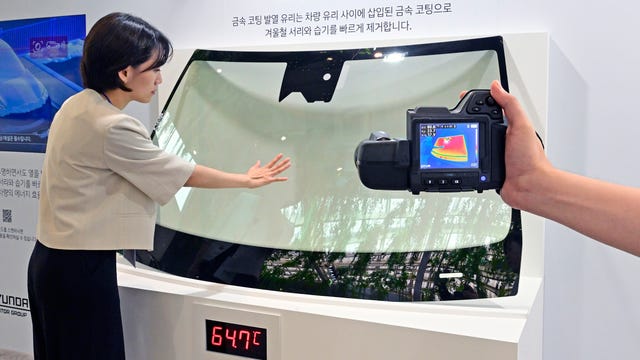Hyundai and Kia Introduce Innovative Solutions for Temperature Management in Electric Vehicles
Hyundai and Kia are at the forefront of developing new technologies to manage extreme temperatures inside and outside electric vehicles (EVs), a critical challenge affecting range and efficiency. The automotive industry is witnessing a paradigm shift in addressing temperature-related issues, driven by the growing demand for EVs.
One of the most promising innovations is a nano cooling film capable of reducing interior temperatures by up to 54 degrees Fahrenheit. This technology works by reflecting solar energy and emitting mid-infrared wavelengths, effectively blocking infrared radiation from outside while allowing heat to escape from inside the vehicle. Tests conducted by Hyundai and Kia on identical cars showed a significant difference in interior temperatures: vehicles without the nano film reached 119.3 degrees Fahrenheit, while those with the film recorded a temperature of 96.8 degrees Fahrenheit.

In addition to passive cooling solutions, Hyundai and Kia are also working on a Radiant Heating System designed to conserve energy. This system uses a fabric-wrapped heating element that produces infrared rays and can reach temperatures of up to 230 degrees Fahrenheit. By directing radiant heat towards passengers’ legs, it achieves the desired warmth more efficiently. According to the automaker, this technology could conserve up to 17% more energy when used alongside the vehicle’s existing heating system, potentially extending the driving range of EVs in cold weather.
Another area of focus is improving windshield defrosting methods. Hyundai and Kia are developing metal-coated heated glass that can quickly remove moisture and frost from windshields. This invisible coating not only enhances winter performance but also blocks at least 60% of solar energy, contributing to cooler interiors during summer. The 48V system can defrost the glass surface within five minutes at -18°C, doing so up to four times faster and with around 10% less energy compared to conventional systems.
These advancements reflect the industry’s move towards more efficient and innovative temperature management solutions for EVs. As the technology continues to evolve, it is likely to have a significant impact on reducing range anxiety and improving overall vehicle efficiency.



